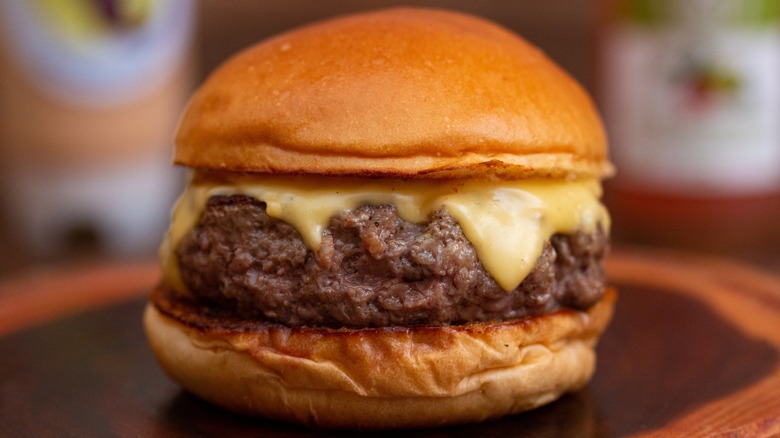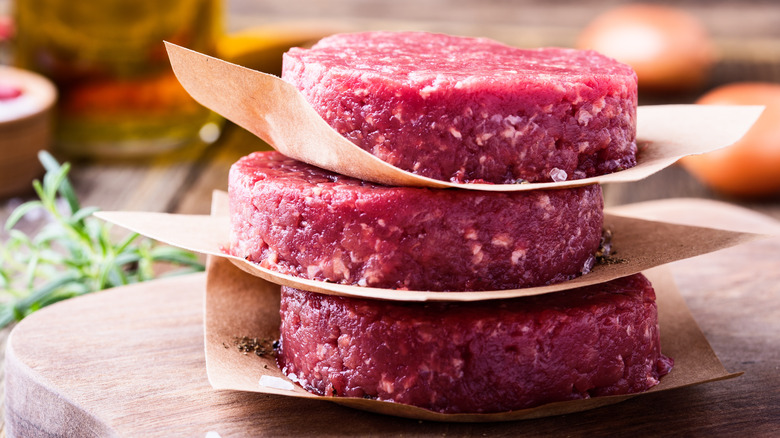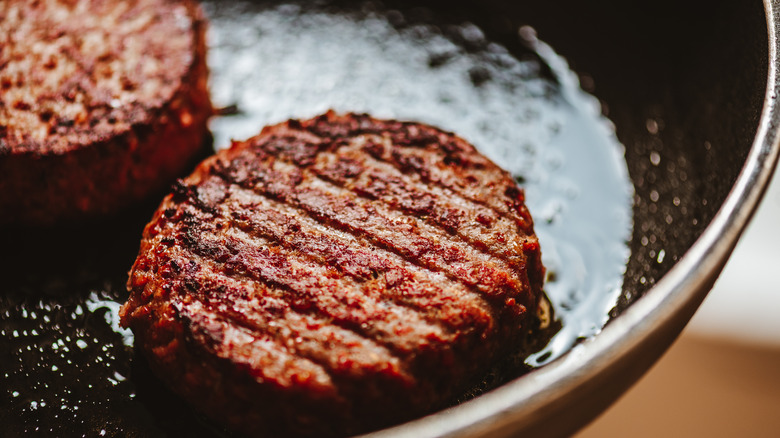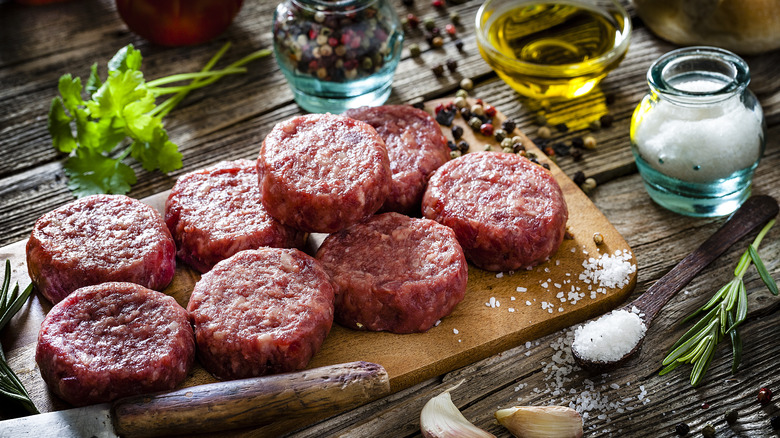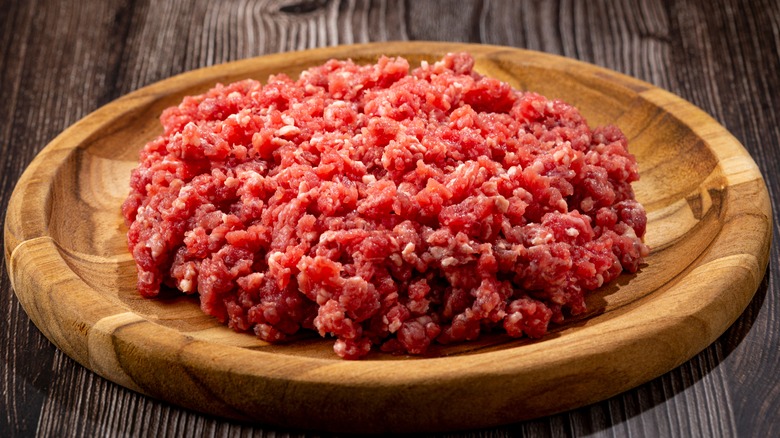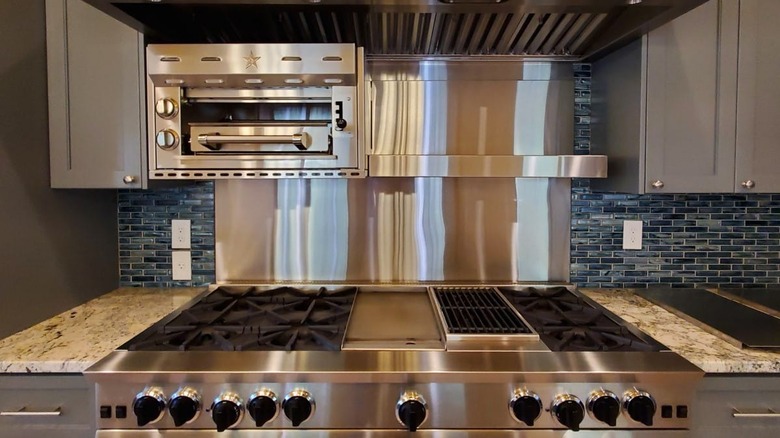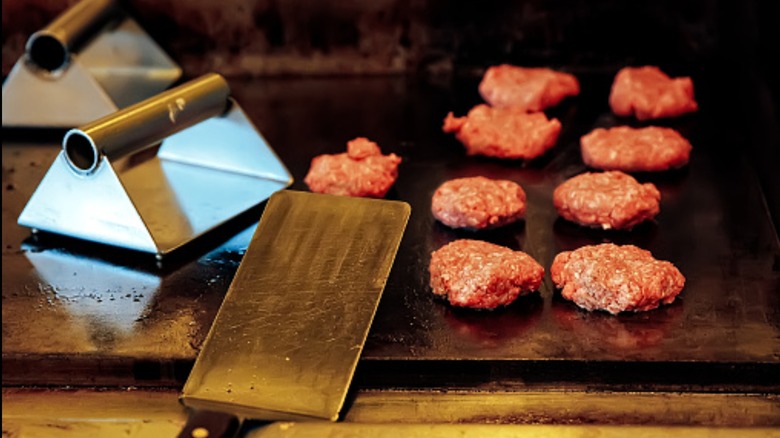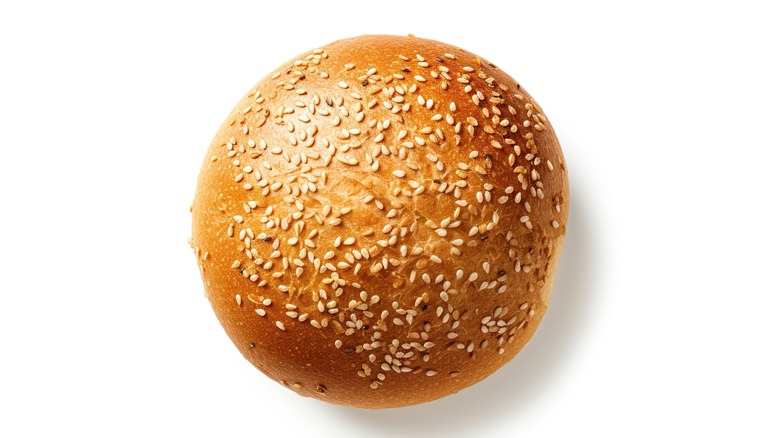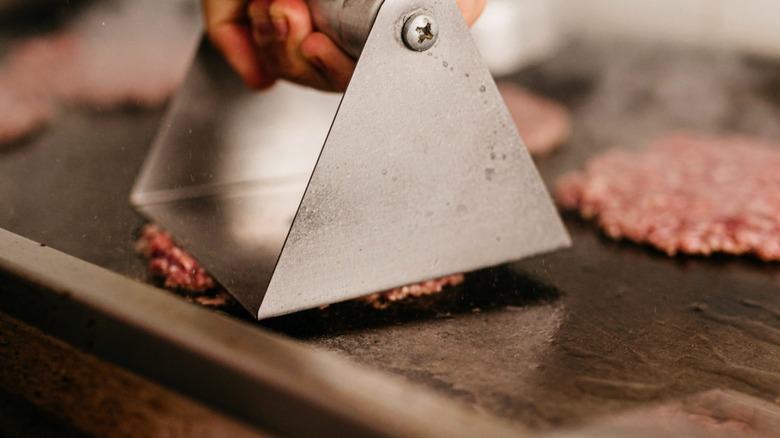Why Restaurant Burgers Taste Better Than Those Made At Home
Burgers are always a delicious solution when hunger strikes. In just a few minutes, a bit of beef and some buns can be easily transformed into a handheld meal that's tasty and filling. Instead of going out to get your burger fix at a restaurant, it's tempting to fire up the grill and take matters into your own hands. But have you ever noticed that restaurant burgers often taste better? As it turns out, there are plenty of good reasons for that. The good news is that learning some tricks of the trade from the pros can help you take your homemade burger game to the next level.
Whether it's due to technique or special equipment, professional cooks have a few tricks up their sleeves to nudge their burgers into the realm of excellence. If you're looking for ways to transcend mediocrity and accurately mimic the flavors of your favorite restaurant burgers, then you're in the right place. Read on to see why restaurant burgers taste so good and learn how to replicate those flavors at home.
The burger patties are gently formed
The formation of the burger patties is one of the most important steps of the entire process — yet often overlooked and mistakenly considered trivial by amateur home cooks. When raw ground beef is overworked and packed into tightly dense patties, the end result is a tougher burger, which isn't exactly desirable or appetizing. What we're aiming for is a burger that's tender and juicy. And one of the best — and frankly, easiest — ways to accomplish this is by gently forming the burger patties.
Rather than using your palms to firmly squish the burgers into compact hockey pucks, try to apply light and minimal pressure instead. A restaurant that makes a good burger will only apply just enough pressure to keep the burger patty intact. By doing so, the beef is a little looser, which ends up giving the burger a much more tender texture that's extra juicy and succulent. The bottom line is that professionals tend to handle burgers with intention and it makes a big difference in how they turn out.
The burgers contain the right fat content
Making burgers with the right amount of fat makes all the difference. If the fat content of the burgers is too lean, they will be too tough and dry. On the other hand, if a burger is too fatty, it won't hold together and will fall apart. The sweet spot is in striking a balance between these extremes — a burger that has enough fat for flavor and succulence, but also has enough structural integrity to stay together.
Many professionals agree that the best combination for burgers is a ground chuck blend that's 80/20 (80% lean and 20% fat). This is a common blend that's found in the beef section of most grocery stores. Leaner ground beef mixtures may be a tad healthier since there's a little less fat, but do you really want to pay the price when the burgers inevitably end up chewy and dry? Restaurants understand that a burger's fat content is half the battle.
They are properly seasoned
Sometimes simple is best and that's definitely the case when it comes to seasoning burgers. Home cooks often season burgers too heavily, mistakenly thinking that's the secret to making them tastier. But the truth is that seasoning burgers too much ends up doing more harm than good. When raw burger meat is overly seasoned, the beef ends up taking on a flavor and texture that's salty and herbaceous — similar to sausage or meatloaf. But we aren't making sausage or meatloaf; we're making burgers.
The best approach here — and the method adopted by many professionals in the restaurant industry — is to simply season burgers with a little salt and pepper right before grilling. By keeping the seasoning simple, the flavor of the beef is allowed to shine instead of being masked with spices. If you've noticed that your homemade burgers end up tasting sausage-like, here's a good chance that you're guilty of over-seasoning.
Restaurants have custom beef blends
Not only do restaurants understand the importance of fat content, they also often develop secretive, proprietary beef blends. These beef blends are essentially highly customized orders that are specifically developed for certain restaurants. In fact, the burger patties at Shake Shack come from a proprietary beef blend that took years to perfect. As such, the exact recipe is shrouded in mystery.
So if you find that you just can't quite precisely duplicate the flavors of your favorite burger restaurant, it's highly possible that the restaurant uses a custom beef blend that's pretty much impossible to know or have direct access to from grocery stores. The best you can do in this situation is experiment with different beef blends at home until you get closer to the flavor you're looking for. Pro-tip: If you're trying to mimic Shake Shack's burgers, Chef J. Kenji-Lopez Alt's tinkering in the kitchen discovered that a 50:25:25 blend of sirloin, chuck, and brisket was convincing enough.
Access to commercial-grade broilers
Residential kitchens tend to have a handful of basic tools including a stove, grill, and a few pans or skillets. While all of these tools can play a role in making a good homemade burger, there's one thing that most residential kitchens don't have that most commercial kitchens do: a salamander broiler.
While it's true that your oven most likely has a broiler setting, it's important to understand that odds are it can't hit the same intense temperatures that commercial-grade broilers at restaurants can. Home broilers tend to hit about 550 degrees F — which is definitely hot — but that pales in comparison to restaurant salamanders, which can reach nearly three times that heat at 1500 degrees F. The scorching temperatures of commercial-grade broilers allow restaurants to easily sear meat and melt cheeses to get a caramelized crust that can be more difficult to achieve with the basic tools in most home kitchens. Rather than dumping thousands of dollars into a kitchen remodel at home, a much cheaper alternative would be to score a handheld blow torch that runs on butane and will allow you to give your burgers a quick lick of direct flames.
Flat top griddles offer flexibility
Sure, some of us have flat-top griddles at home, but there tends to be a big difference between those and the ones that restaurants are equipped with. Restaurant griddles are typically big enough to fit dozens of burgers at a time, which makes producing mass meals a breeze. But there's another key point here and that's how a griddle helps with timing.
In life, timing is everything — and perhaps no other realm makes that as abundantly clear as cooking. Flat top griddles help with timing when it comes to burgers because everything can be cooked simultaneously. Burgers, grilled onions, toasted buns — all of it can be cooked on the same spacious surface, which means that everything can quickly come together extra hot. This gives restaurant burgers a level of freshness that's hard to compete with in home kitchens that are conveniently equipped with the same kind of set-up. Being able to put the finishing touches on a burger all in the same place gives restaurants an edge that helps the burgers taste even better.
It's all about the bun
Many home cooks just slap a burger onto a bun right out of the bag. There's nothing necessarily wrong with this — no doubt, all of us have consumed or served burgers on a plain, untoasted bun before for the sake of convenience. But there's also no denying the fact that giving the buns just a little extra attention is absolutely worth the minimal time investment.
When buns are lightly steamed or buttered and toasted, the bread's flavor comes back to life. Equally important is the extra texture that it gives. When burger buns are toasted, it creates some textural contrast between the burger and the bread. And when buns are lightly steamed, the bread and cheese meld together in a way that's also highly delicious and satisfying. At restaurants like Five Guys, this is accomplished by quickly wrapping up the burgers once they're off the grill: The residual heat from the burger is enough to melt the cheese and lightly steam the bun inside of its wrapper. If you're not giving your burger buns enough attention and just using them straight out of the bag, consider taking a cue from restaurants and showing them a little love.
Tips for making better burgers
There are a lot of things you can do to make better burgers at home. For starters, try grinding your own beef, which will give your burgers extra freshness. There are some manual models that are under $20. Pro-tip: Cut your beef into little chunks first, then place them in the freezer for a few minutes before you start grinding. This will give the beef a little extra firmness and make it less likely to get gunked up on the blades of the grinder.
Another way to kick your burgers up a notch at home is to try making a smash burger. The technique is simple, yet the outcome is delicious. Start by gently forming about 4 ounces of beef into a ball. Lightly season on all sides with salt and pepper. Get a cast iron pan hot on the stove, and when it starts to lightly smoke, place the ball of beef into the pan — you should hear it sizzle right away.
Use a flat spatula or burger press to firmly smash the burger down and flatten it out. To prevent stickage, you can place a little piece of parchment paper between the burger and spatula during the smashing process. Once the burger's edges start to brown, flip it and quickly add cheese. The extra crispy texture from searing in its own fat adds an incredible depth of flavor to the burger that will keep you coming back for more.
